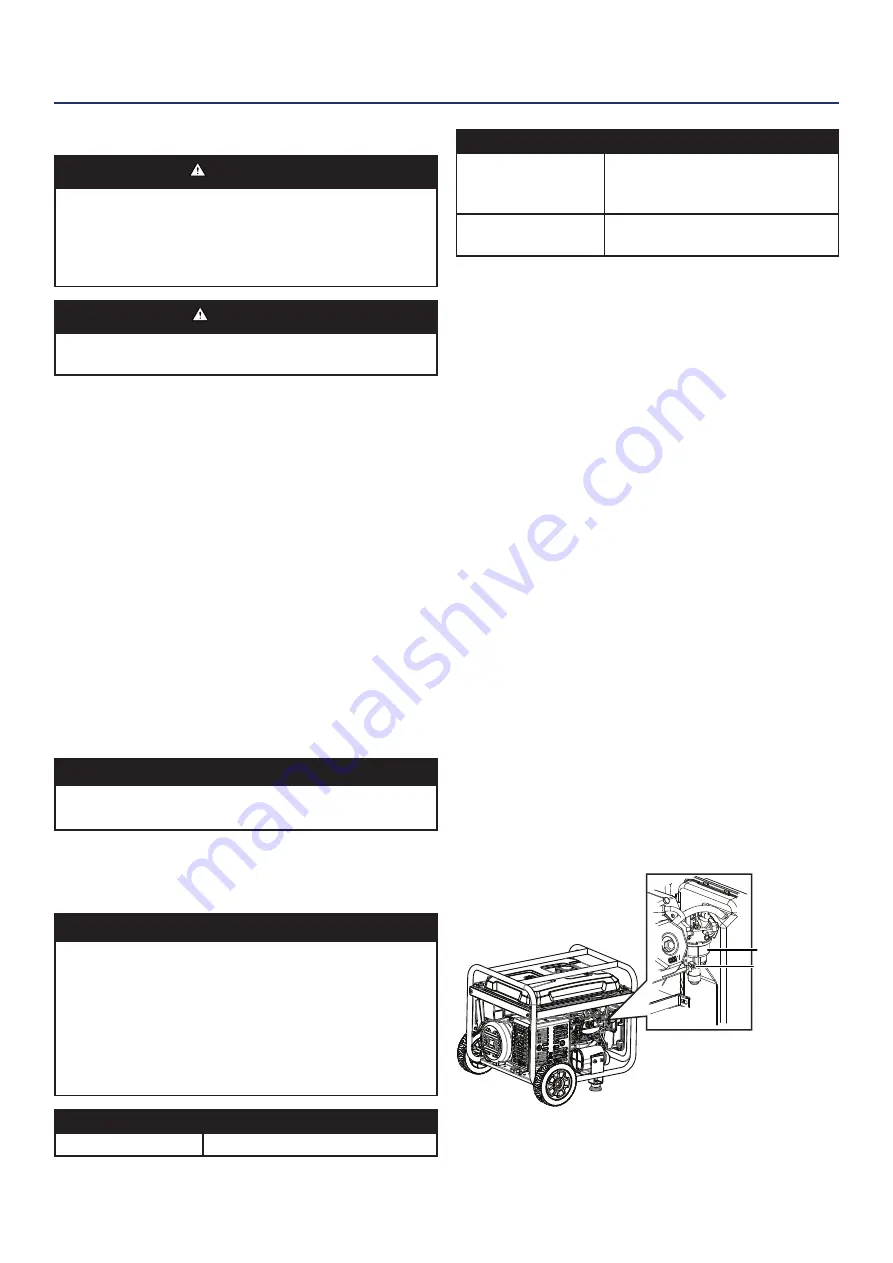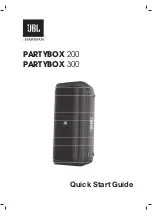
Westinghouse Outdoor Power Equipment, LLC | 21
BATTERY REPLACEMENT
WARNING
Burn hazard. The battery contains sulfuric acid
(electrolyte) which is highly corrosive and poisonous.
Wear protective clothing and eye protection when
working near the battery. Keep children away from the
battery.
CAUTION
Battery posts, terminals contain lead and lead
compounds. Wash hands after handling.
1.
Loosen and remove the bolt on the battery hold-down
plate and swing the plate out.
2.
Disconnect the quick-connect plugs and remove the
battery from the unit.
3.
Disconnect the quick-disconnect cable leads from the
battery.
4.
On the replacement battery, connect the white (-) quick-
connect cable to the battery negative terminal. Slide the
rubber boot over the connection hardware.
5.
Connect the red (+) quick-connect cable to the battery
positive terminal. Slide the rubber boot over the
connection hardware.
6.
Install the battery into the generator. Reinstall the battery
hold-down plate and tighten the bolt.
7.
Connect the quick-connect plug.
NOTICE
Dispose of the used battery properly according to the
guidelines established by your local or state government.
STORAGE
Proper storage preparation is required for trouble-free
operation and generator longevity.
NOTICE
Gasoline stored for as little as 30 days can deteriorate,
causing gum, varnish, and corrosive buildup in fuel lines,
fuel passages, and the engine. This corrosive buildup
restricts the flow of fuel, which can prevent the engine
from starting after a prolonged storage period. The use
of fuel stabilizer significantly increases the storage life of
gasoline. Full-time use of fuel stabilizer is recommended.
Follow the manufacturer’s instructions for use.
STORAGE TIME
RECOMMENDED PROCEDURE
Less than 1 month
No service required.
STORAGE TIME
RECOMMENDED PROCEDURE
2 to 6 months
Fill with fresh gasoline and add
gasoline stabilizer. Drain the
carburetor float bowl.
6 months or longer
Drain the fuel tank and carburetor
float bowl.
SHORT TERM STORAGE
• Allow the generator to cool a minimum of 30 minutes
before storage.
• Replace all protective covers on the generator control
panel.
• Wipe the generator with a moist cloth. Clean any debris
from the muffler cooling vents.
• Store the generator in a well-ventilated, dry location
away from sparks, open flames, pilot lights, heat, and
other sources of ignition such as areas with a spark-
producing electric motor or where power tools are
operated.
•
DO NOT
store the generator, or gasoline near furnaces,
water heaters, or any other appliances that produce
heat or have automatic ignitions.
• With the engine and exhaust system cool and all
surfaces dry, cover the generator to keep out dust.
DO
NOT
use a plastic sheet as a dust cover. Non-porous
materials trap moisture and promote rust and corrosion.
LONG TERM STORAGE
Even properly stabilized fuel can leave residue and cause
corrosion if left long term. If storing the generator for two to
six months, drain the float bowl to prevent gum and varnish
buildup in the carburetor.
DRAINING THE FLOAT BOWL
1.
Turn the fuel tank valve to the OFF position.
2.
Locate the drain screw on the bottom of the carburetor
float bowl.
Drain screw
Float bowl
3.
Place an appropriate gasoline container under the drain
screw to catch the drained fuel.
MAINTENANCE










































